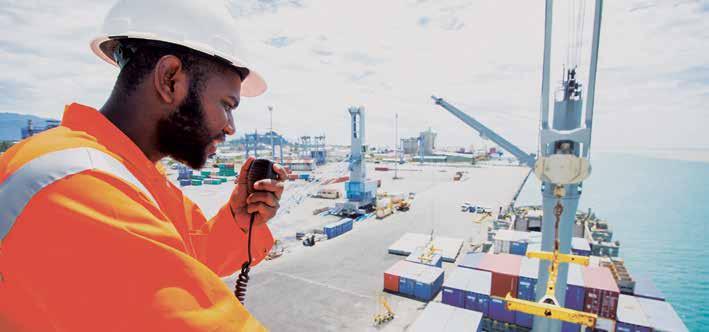
2 minute read
More capacity, more efficiency
Freight volumes into PNG’s two major international ports, Motukea and Lae, were up substantially in 2022. New resources projects and transformative investments look set to drive further expansion.
‘Motukea was up 18 per cent yearon-year, while Lae was up seven per cent,’ says Robert Maxwell, CEO of International Container Terminals Services (ICTSI) South Pacific, speaking of freight volumes at PNG’s two major international ports in 2022.
While this indicates more economic activity, it’s also a symptom of improved efficiencies.
According to data from government agency PNG Ports, vessel wait times have fallen by 45 per cent in Lae and 43 per cent at Motukea since 2017, while the movement of containers per hour has increased in both ports, by 23 per cent and 36 per cent respectively.
At Lae, which handles about half of all the country’s sea freight, ICTSI is introducing two new cranes and three rubber-tyred gantries this year, which will further speed up the unloading of vessels. It is also working with PNG Customs to digitise the customs
clearance process in both ports.
Biggest single investment
Over the longer-term, Lae will be the beneficiary of US$134 million (K472 million) in new funding to develop its Tidal Basin into a deep-water port – part of the US$435 million (K1.53 billion) package provided by the Australian Infrastructure Finance Facility for the Pacific (AIFFP) to support PNG Ports’ 30-year infrastructure development plan.
‘It’s the biggest single investment Australia has made in any sector in PNG,’ enthuses Maxwell. ‘It will enable a new two-to-three vessel berth in Lae, set to be complete in early 2027.’
He expects this to have a multiplier effect on commerce in Lae and set PNG’s second city up to become a transshipment hub for the Pacific region.
Shared benefits
Lae won’t be the only port to benefit from the new AIFFP funding: the remainder will be shared between the regional ports of Kavieng, Oro Bay, Vanimo, Lorengau and Wewak. To take some of the pressure off Lae, PNG Ports is also looking at an inland freight hub at Umi, in the Markham Valley, some 140 km up the Highlands Highway.
Double-digit growth
Meanwhile, PNG’s largest local shipping and logistics provider, Steamships Logistics, is also preparing for growth.
‘We’re making longer term investments in our liner shipping and harbour towage businesses,’ says Chief Operating Officer Thomas Bellamy.
‘We’ve invested K100 million on assets for the division overall in 2022 and that will double to K200 million in 2023.’
He expects double-digit growth at least for 2024 and 2025 – with capacity for shipping and trucking up by 20 per cent in 2023.
‘Papua LNG is definitely the project generating the most interest right now,’ he notes. ‘But it’s important we don’t take our eye off business as usual.’
Maxwell is confident that there is plenty of capacity as PNG’s ports prepare for a decade of increased economic activity. Only 34 per cent of Motukea is currently utilised, he notes, while the AIFFP-funded expansion of Lae is timely.
‘The outlook is good. We’re ready to accommodate the growth expected from the Papua LNG project and beyond,’ he says.









